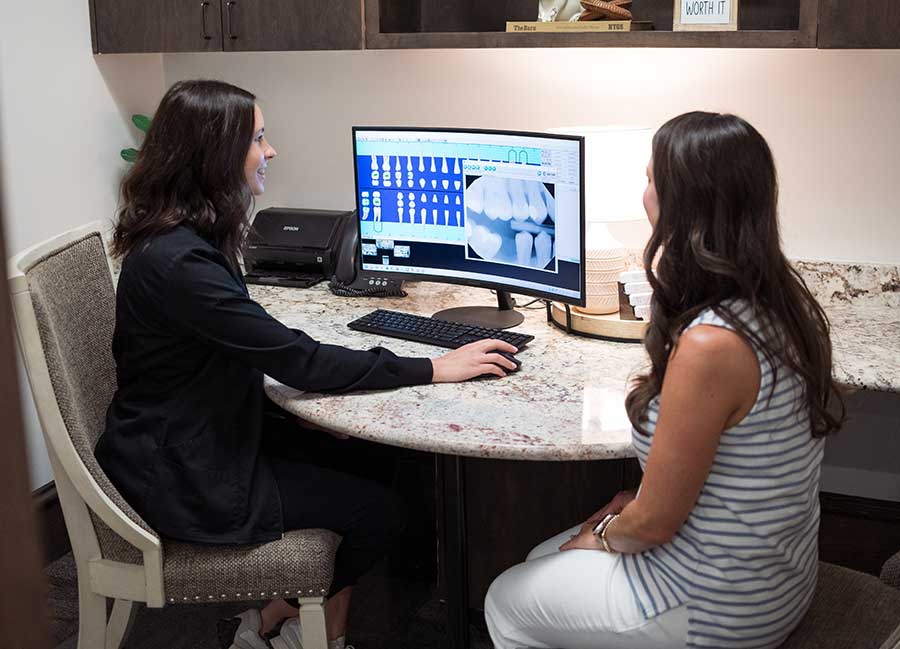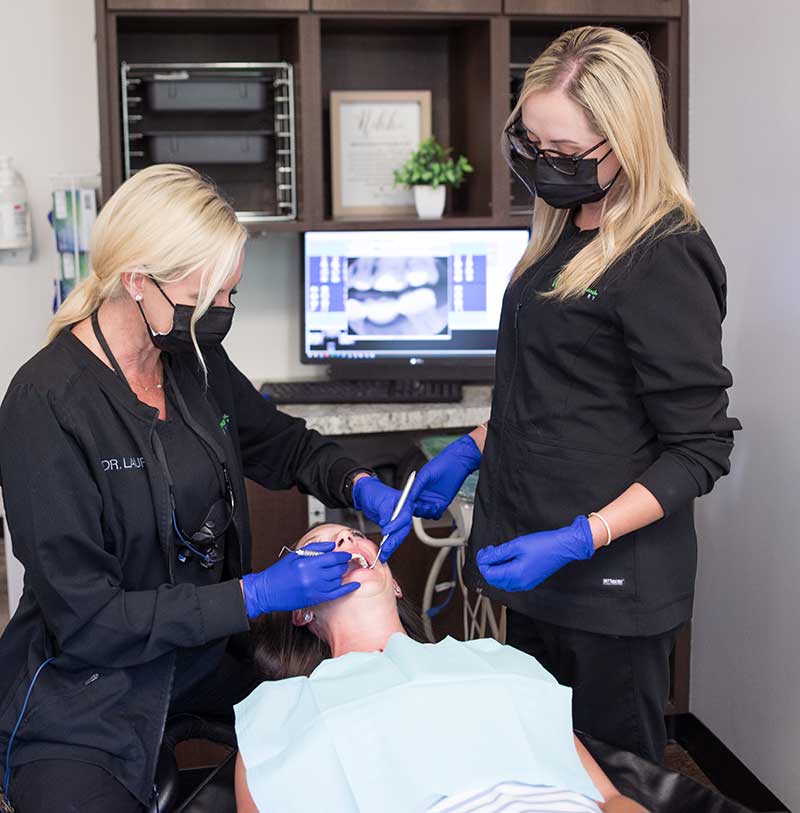Same Day Dentistry
With the Planmeca PlanScan, our doctors can create crowns, veneers and bridges in just hours, rather than days.
Why same day dentistry?
Same Day Dentistry allows our team to help make your perfect smile a reality in one visit! Some other benefits include:
Comfort
No gooey impressions that can oftentimes make patients feel uncomfortable and claustrophobic.
Custom
With the PlanScan, digital impressions are taken to create perfectly custom-fit and color-matched crowns, veneers and bridges.
Quick
The entire process is done in one visit and just a few hours for a hassle-free experience, and no need to wear temporary crowns or be numb twice.
How It Works
To start, the target tooth is prepared. The ultra-precise PlanScan takes digital pictures using laser technology, which is then converted into a 3D model of the tooth. Then, the crown is created using a fabrication machine. We have a large variety of ceramic blocks in multiple shades to perfectly match your other teeth. Finally, the completed crown is polished and fitted, and then cemented into place.
Preventative Dentistry
Studies have shown that roughly 25% of adults in the United States have untreated cavities, 50% have some degree of gum disease, and many of these people have no idea that there is a problem or that it can lead to a host of other more serious problems. Regular dental care helps keep your teeth in the best possible condition and contributes to your overall physical health, so it’s important to maintain a good oral hygiene routine.
- Home Care →
- Professional Dental Care →
Home Care
The American Dental Association recommends that you brush your teeth twice daily for at least two minutes each time with a toothpaste that contains fluoride (look for one with the ADA seal of approval). You can use a manual or electric toothbrush, although the latter often works better at removing food particles and plaque. Flossing your teeth once each day and using fluoridated mouthwash will also help keep your teeth and gums healthy.
Professional Dental Care
The ADA also recommends that you schedule a preventative checkup and cleaning every six months. The Stonebridge Ranch Dentistry team will perform several procedures at these appointments. First our hygienist will scale your teeth to remove the plaque and calculus that builds up between cleanings. Your teeth will then be polished to help remove any stains from coffee, tea, or tobacco products, and then a fluoride treatment will be applied to guard against cavities. X-rays may be taken to help the Stonebridge Ranch Dentistry team examine the areas that are not visible in the mouth, and they can be used as a baseline to note any changes that occur between visits. The Stonebridge Ranch Dentistry team will do a thorough oral examination to look for signs of decay, gum disease, oral cancer, and other problems, and she will discuss her findings with you along with any concerns or questions you have.
Taking care of your teeth will help you avoid health problems in your mouth and throughout your body. Most dental insurance plans cover preventive visits, so make time for proper dental care now so you can enjoy good oral health throughout your life.
Preventing Mouth Cancer With VELscope
Over 50,000 North Americans will be diagnosed with oral cancer this year. There is an 83% survival rate when it’s caught early. A VELscope oral health exam takes just two minutes.
Mouth Cancer Facts
- Genetics: Inherited defects in certain genes can increase the risk of oral cancer.
- Poor oral hygiene: Poor dental hygiene and gum disease can increase the risk of oral cancer.
- Tobacco and alcohol use: Smoking, chewing tobacco, and vaping can increase the risk of oral cancer.
- Sun exposure: Exposure to ultraviolet (UV) light from the sun or tanning beds can increase the risk of lip cancer.







